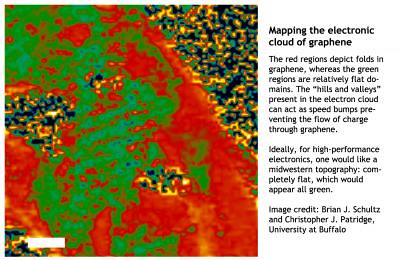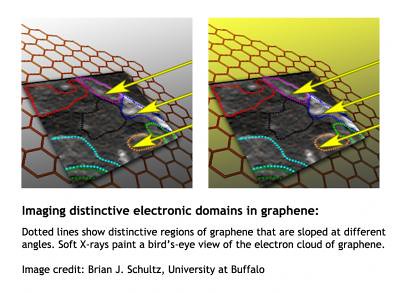Superzoom: snaps of graphene's crumpled electron clouds

We talk a lot about graphene, on this blog. The wonderful two dimensional lattice of carbon with its hexagonal, chickenwire structure. All the diagrams are lovely and neat and give the impression that this stuff must be flawless, for all it is a single atom thick.
So instead of doing more talking, this blog post aims to give you a glimpse of what things really look like, once you get down to the nanometre scale.

This picture, put together by chemists at the University at Buffalo, shows just how far from the truth our idealised imaginings can be.
It shows folds in a sheet of graphene, with the hills showing up in red, and relatively flat plains coloured in green. The researchers say that these tiny mountain ranges warp the cloud of electrons that envelopes a graphene sheet, acting as “speed bumps” (per the press announcement), interfering with the normally astonishing conductivity of the material.
The researchers also discovered that other materials used in graphene’s manufacture can get caught in the “valleys”, also distorting the electron cloud, but in very specific ways.

In this second image, graduate student Brian J Schultz overlays the real-world image onto the idealised grid of graphene familiar to us all from GCSE chemistry text books.
You can read the whole press release here. The work is published in Nature Communications.